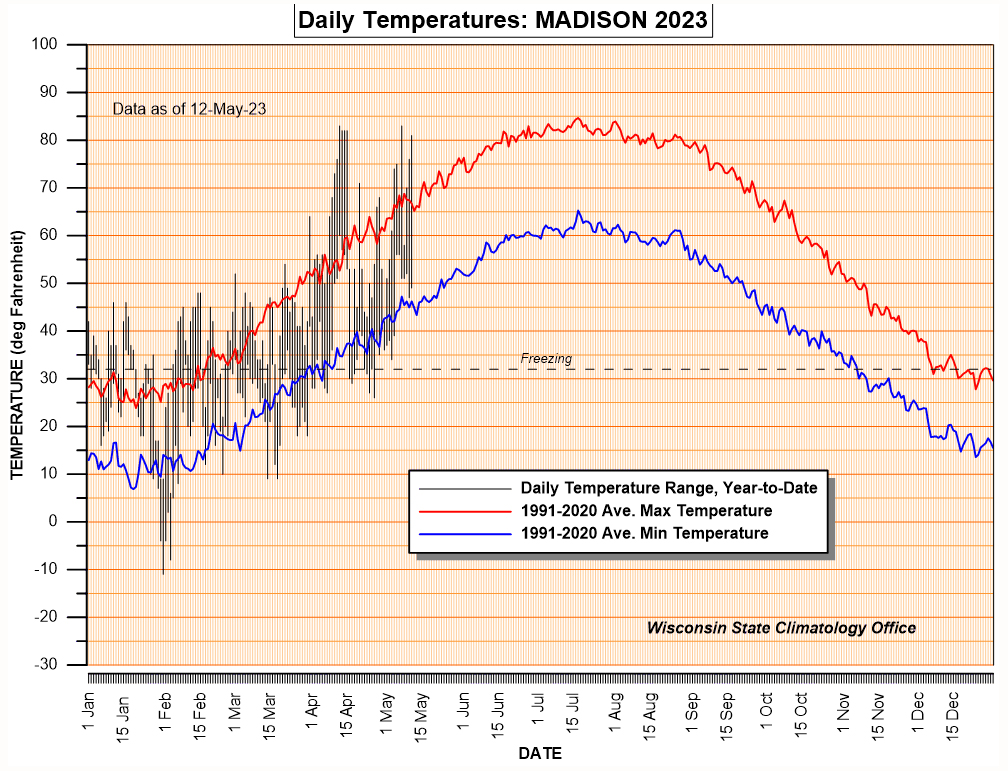Though it now seems to be fully in swing, the spring has sure seemed delayed in coming this year in southern Wisconsin. This made us wonder if there might be a more refined, and local, way to think about the calendar-day boundaries of the seasons.
In research undertaken to write a recent column, we catalogued Madison’s record high and low temperature data for each calendar day employing data that went back to 1939. An interesting partition of the full year resulted from this simple analysis.
It turns out that not once over these past 83 years has a daily record low temperature been 32 degrees or lower between June 11 and Sept. 11. Might this be a valid reason to suggest summer in Madison extends from June 11 through Sept. 11?
On the other extreme, at least once over these last 83 years, a record low has been zero or below on every day from Nov. 23 to March 15. Might this be a valid reason to suggest that winter in Madison extends from Nov. 23 to March 15?
Once these notions are entertained, they really start to make intuitive sense. Of course, then “spring” in Madison would extend from March 16 to June 10 (again, roughly consistent with a native’s impression), and “autumn” would extend from Sept. 12 to Nov. 22.

Credit: Wisconsin State Climatology Office
There may be more sophisticated ways to characterize the seasons locally, but using just two seemingly arbitrary temperature thresholds as we’ve done here returns a fairly satisfactory result.
Steve Ackerman and Jonathan Martin, professors in the UW-Madison department of atmospheric and oceanic sciences, are guests on WHA radio (970 AM) at 11:45 a.m. the last Monday of each month. Send them your questions at stevea@ssec.wisc.edu or jemarti1@wisc.edu.

